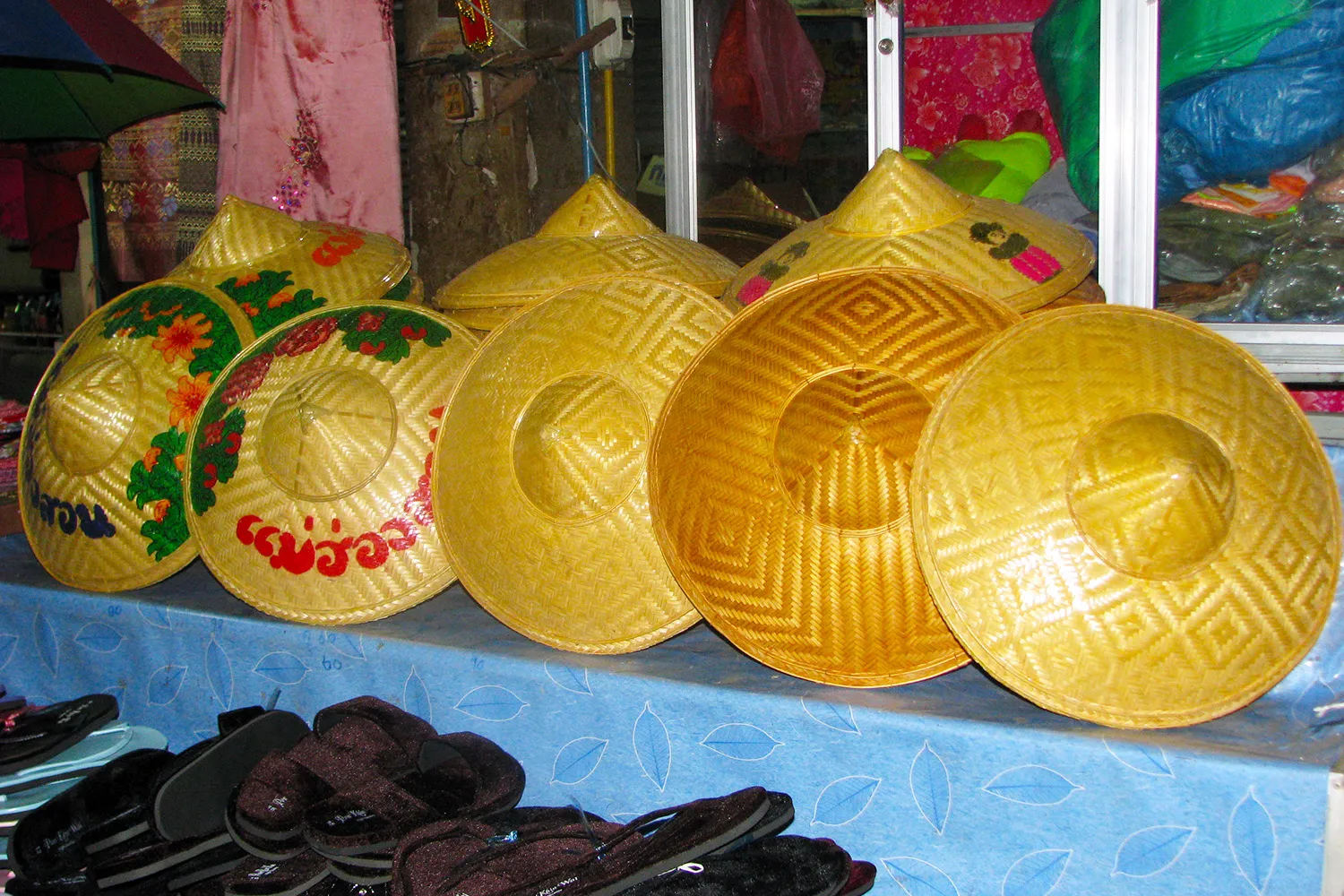Tai Design:
The distinct features of Tai design exhibit similarities to those found in various Thai tribal groups spread across the Indochina region. Particularly in the realm of art, Tai design shares a common lineage with Thai art, indicating a longstanding existence spanning thousands of years, paralleling the endurance of Thai artistic traditions. Historically, during the approximate 9th century of the Buddhist era, the Asian landscape became a recipient of Indian Buddhist culture. This cultural influx included not only religious teachings but also the transfer of artistic forms and skilled artisans. The early epochs saw a convergence of artistic expressions from China, Myanmar, Cambodia, Indonesia, and Thailand, all of which were influenced by the cultural inflow from India. In this context, the Shan people are considered an integral part of the broader Thai nation. Consequently, they too were exposed to and assimilated elements of Indian artistic traditions, mirroring the cultural trajectory of other Thai tribal groups. This interconnectedness emphasizes the shared heritage and religious influences that permeated the region, fostering a rich tapestry of artistic expressions that continue to resonate across different Thai ethnicities.
Tai Shirt:
The design of a women’s Tai blouse adheres to specific guidelines. It should extend to the waist level and feature an overlapping front, securing one side to the other. Options include blouses with shoulder sleeves or sleeveless versions. Embellishments are a hallmark, often showcasing intricate embroidery or engravings that adorn the neckline, sleeve edges, and hem. Additional decorations using beads, pearls, and spangles enhance the blouse’s aesthetic. For men’s Tai shirts, the stitching is typically concealed within the garment. Variations include sleeveless or open-sleeved styles, with the latter having a distinct edge on both sides. In the case of long sleeves, stitching may be visible around the elbows or sleeve edges. The stitching pattern involves either double stitches or single stitches, extending from the neckline straight down to the hem on both sides. A similar stitching line runs down the middle of the back. The buttons are crafted from the same fabric as the shirt, harmonizing seamlessly. Pockets are a functional element, found on both sides of the hem and one on the left chest. The embroidery plays a central role, necessitating precision, neatness, and an aesthetic appeal that aligns with the foundational details. The stitching should be executed with finesse, achieving a balance between proximity and spacing. The lining cloth’s color should mirror that of the shirt, creating a harmonious visual unity.
Kubtai:
In the local Shan language, and alternatively known as the “wickerwork hat,” the Kubtai holds a distinct significance. Functionally, it serves as a shield against sunlight and rain, finding utility in various activities. The hat makes appearances at traditional parades, symbolizing the district’s distinctiveness and cultural identity. Beyond practical use, it graces shops, homes, and exhibition spaces, lending an element of beauty and showcasing unique features or advantages. In the present day, the Kubtai has gained considerable popularity as a coveted souvenir among tourists visiting Mae Hong Son province. This testament to its appeal underscores its cultural resonance and the meaningful connection it establishes with both locals and visitors, fostering an appreciation for the region’s heritage.

